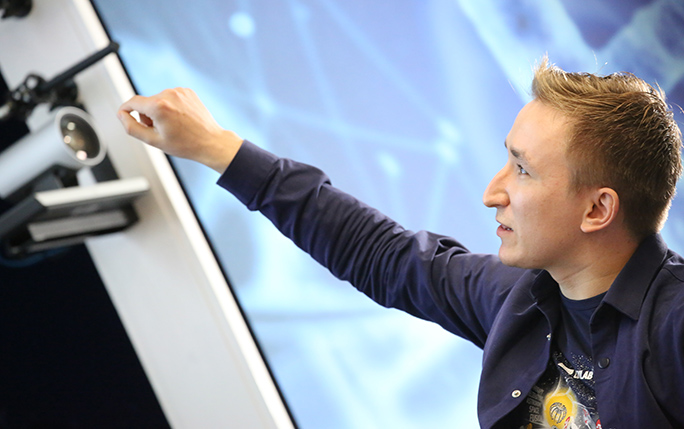AVA Fellow Interviews – Spotlight on Volodymyr Rodin

Now the formal period of the project has come to an end, this is a good moment to look back at the Fellows’ time with AVA. We have asked the Fellows a few questions as part of the AVA Spotlight Interview series; this will give you a more personal insight into their motivation, achievements and outlook.
For this interview we have spoken with Volodymyr Rodin who joined the AVA Network in October 2017 where he studies collision dynamics of correlated quantum systems. These can be undertaken by crossing a gas jet target with a beam of low energy antiprotons. However, this requires beam compression to a diameter of around 1 mm and a pulse length of 1-2 ns. At the Cockcroft Institute / University of Liverpool, Volodymyr worked on developing a comprehensive simulation framework to enable these studies under both ELENA and FLAIR conditions.
What did attract you to the AVA network? Has it fulfilled your expectations?
“The first thing that caught my attention in this program was the novelty of the research and work with low energy antiprotons. From previous experience, most of the people focused their views on high energy physics and the opposite side was still a mystery in some cases.”
Why did you choose to go to University of Liverpool?
“Professor Carsten P. Welsch from the University of Liverpool directly contacted me after my application. Once I became more familiar with the QUASAR group and previous Marie Curie programs he coordinated I knew going to Liverpool was a good opportunity, and to also participate in many additional activities linked to the project.”
Can you explain in a few words what your project was about and what have you achieved?
“My project was aiming to find efficient ways to compress the antiproton bunch size transversely and shorten them by a factor of 100. That would allow studying the many-body Coulomb problem and obtain fully differential cross sections via collisions with atomic gases. This work included a more realistic description of storage rings and beamlines than was done before. In the end, besides other outcomes, I have demonstrated and published the results of how we can achieve this.”
What has AVA provided you professionally?
“During my project, I have met a lot of good colleagues with whom we have established fruitful collaborations on different topics: low energy physics, novel acceleration methods, and state-of-art measurement devices. I have obtained great experience and skills in accelerator physics, which consolidated my previous knowledge in other fields.”
Can you say something about your next career move?
“My future career step will focus on further research of low-energy machines or any other projects that experience common complications. Primarily I am looking for interesting positions in the EU.”
What will be your most cherished memory from AVA?
“Oh, it is hard to choose one! I liked the AVA scientific and outreach events where I worked together with other Fellows on delivering something. And of course, the taste of a good cup of coffee after a successful experiment.”